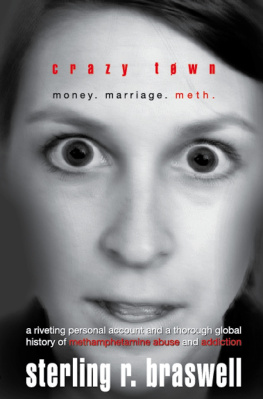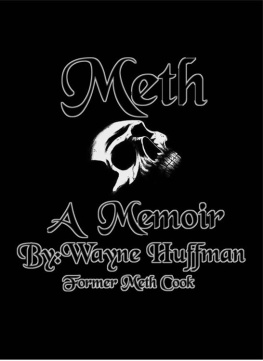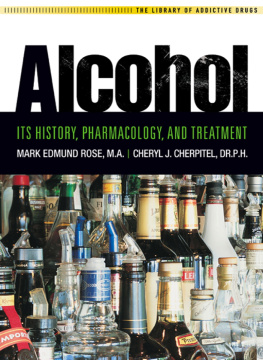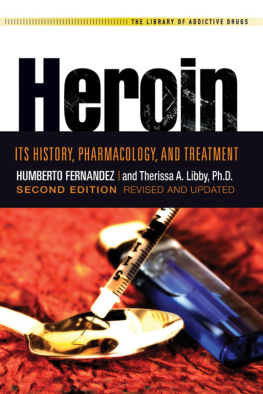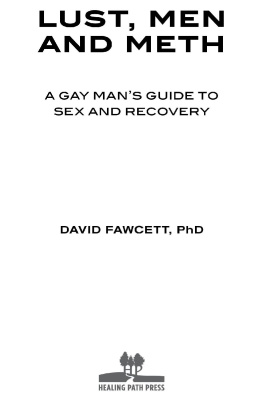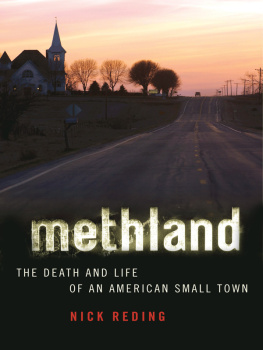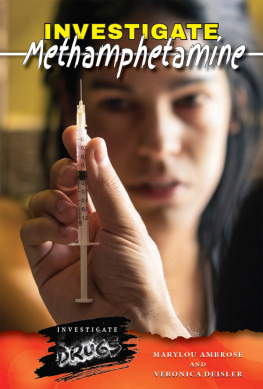Half Title

Title

ITS HISTORY, PHARMACOLOGY, AND TREATMENT
RALPH WEISHEIT, PH.D.
and
WILLIAM L. WHITE, M.A.

Copyright
Hazelden Publishing
Center City, Minnesota 55012
800-328-9000
hazelden.org/bookstore
2009 by Ralph Weisheit and William L. White
All rights reserved. Published 2009
Printed in the United States of America
No part of this publication may be reproduced, stored in a retrieval system, or transmitted in any form or by any meanselectronic, mechanical, photocopying, recording, scanning, or otherwisewithout the express written permission of the publisher. Failure to comply with these terms may expose you to legal action and damages for copyright infringement.
Library of Congress Cataloging-in-Publication Data
Weisheit, Ralph A.
Methamphetamine : its history, pharmacology, and treatment / Ralph Weisheit and William L. White.
p. cm.
Includes bibliographical references and index.
ISBN 978-1-59285-717-3
E-book ISBN: 978-1-59285-838-5
1. Substance abuse. 2. Methamphetamine. I. White, William L., 1947- II. Title.
HV5801.W384 2009
362.299dc22
2008055458
13 12 11 10 09 1 2 3 4 5 6
Cover design by Theresa Jaeger Gedig
Interior design and typesetting by Madeline Berglund
Dedication
To my parents, Lenus and Sarah Weisheit,
who have stood by me these many years.
They have not only given their unwavering support,
but have been models
of good parents and good people.
RAW
This book is also dedicated to the individuals
and families who offer living testimony
that long-term recovery from methamphetamine dependence
is a reality and to the professionals and recovering peers
that help make this possible.
WW
Authors
The authors would like to thank the Coalition Against Methamphetamine Abuse (CAMA) in Edgar and Clark counties in Illinois for generously facilitating the research in which we were able to see and hear firsthand the many ways that the effects of methamphetamine ripple through a community. We also had the opportunity to see CAMA in action and found their dedication and focus inspiring. CAMA provides a model for how citizens can come together to effectively respond to the problem of drug use in their community.
Contents
Preface
PREFACE
In the 1990s, methamphetamine gained national attention, although it was hardly a new drug. It had been associated with a host of social problems in Hawaii and the Far West for many years. One sign of methamphetamines popularity is the hundreds of slang terms for it, including Barney dope, blizzard, candy, chalk, crank, crystal, glass, go, go fast, hillbilly crack, ice, juice, Nazi dope, powder, rock, shit, sparkle, spin, Teena, Tina, tweak, white, yaaba, zoom. There are nearly four hundred nicknames for methamphetamine and more than thirty nicknames for methamphetamine users.
Methamphetamine is a global problem and in some parts of the world it is the leading drug problem. Throughout this book we include references to its use and manufacture in other countries, but the primary focus is on its use, production, and social consequences in the United States. This is done for several reasons. First, the problem is large, and by concentrating on one country, we were able to study the problem in depth. Second, while research continues to expand worldwide, much of the published work thus far has been conducted in the United States. Other countries, most notably Thailand, have generated a substantial body of research on methamphetamine (much of it is referenced in this book), but the volume of work done there still pales when compared with the amount done in the United States.
This book provides a comprehensive overview of what is known about methamphetamine, from its origins to contemporary ideas about treatment. introduces the reader to methamphetamine. It describes how the drug has been portrayed in the media and gives a brief overview of the methamphetamine problem in the United States. Overall patterns of useas well as variations by region, race, and genderare described, setting the stage for the chapters that follow.
provides a context for understanding the current methamphetamine problem by tracing its history and patterns of use over time. Since it was first synthesized in 1887, methamphetamine has been used both as a medicine and as a recreational drug, and there has been a range of consequences.
uncovers the myths and realities of methamphetamines impact on the mind and body. Where there are gaps in knowledgeand there are manyinferences about methamphetamine can be drawn from studies of other stimulant drugs. Methamphetamine can be benign and beneficial for some people while a curse and destructive force for others.
The social effects of meth are addressed in . Methamphetamine affects not only the mind and body, but society as well. This chapter shows the impact of methamphetamine on families, work, and the social lives of users, including its connection to violence. The chapter notes how the drug has played a role in the gay community, particularly in clubs and bars.
takes the reader on a journey through the meth-cooking world. Methamphetamine is smuggled into the country, but it is also a domestic industry, with producers ranging from mom-and-pop operations to super labs that generate hundreds of pounds of the drug. This chapter considers issues surrounding the production of methamphetamine, including environmental contamination, fires, and the exposure of public safety officers to toxic materials.
examines meth in rural communities. It presents a case study of two rural counties in which methamphetamine has been a particularly troublesome problem. The impact of methamphetamine on a variety of community groups is considered, as is the effort of community members to respond to the problem.
Finally, covers what is known about treatment and recovery support resources for methamphetamine dependence. Treating methamphetamine dependence has proven possible but challenging. This chapter also considers how the problem and responses to it might evolve over time.
Throughout the book we have tried to look beyond raw emotions to uncover the factsto the extent that ultimate truth about such issues can ever be known. Our purpose is not only to educate the reader but also to encourage rational discourse about a subject that causes such angst at the individual, community, and societal levels.
Chapter 1: Does Methamphetamine Matter?

Does Methamphetamine Matter?
Woman loved meth more than her son, prosecution says at trial
During a drug-induced sleep the woman rolled over on her three-month-old son suffocating him.
Schoolgirls questioned in sex-for-drugs case
Schoolgirls as young as twelve trade sex for methamphetamine.
A drug scourge creates its own form of orphan
The foster care system in Oklahoma is overwhelmed by the number of children removed from homes where their parents were using or making methamphetamine.



